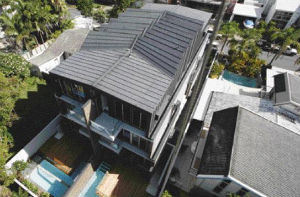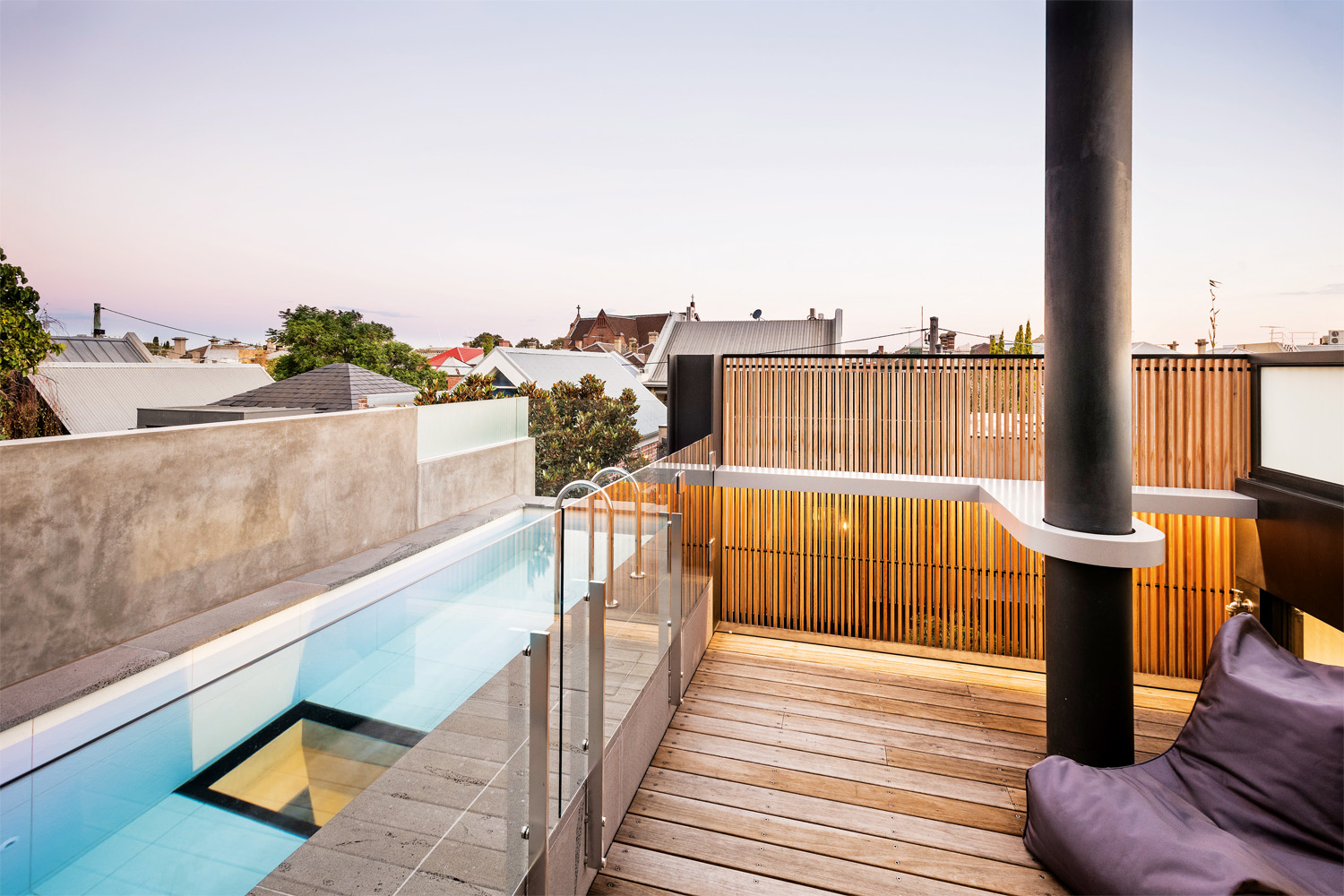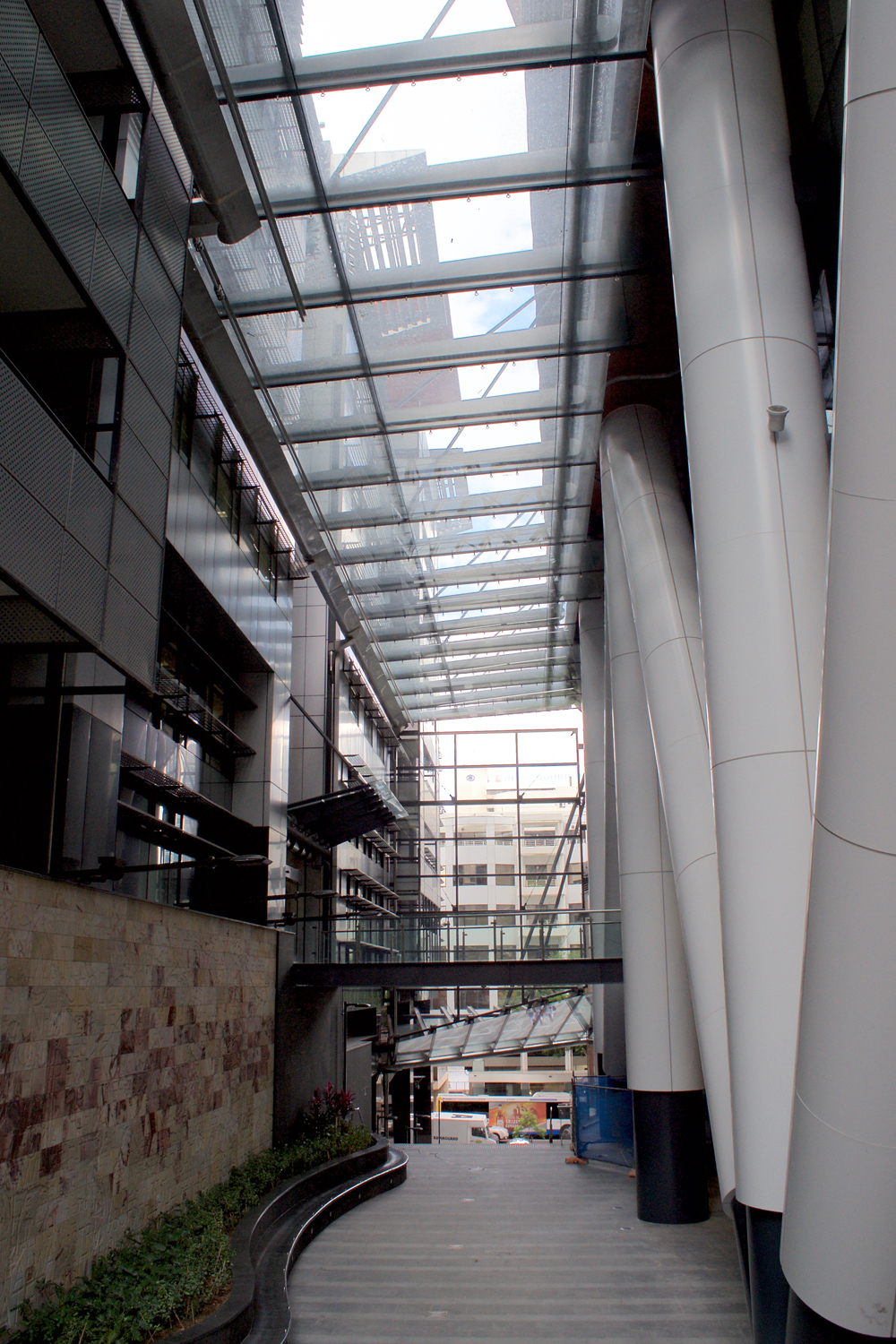Functionally, the roof protects a building, but aesthetically it should bring it to life.

Tiles: Concrete and Terracotta
Tiles are generally grouped with more
traditional styles of architecture, but just
because their popularity has a proven longevity,
doesn’t mean developments haven’t taken
place. Manufacturers of terracotta and
concrete tiles are constantly developing their
ranges to offer the best choice of colours and
profiles, not to mention peace of mind when it
comes to safety, health and the environment.
Why Choose Tiles? by Csr Roofing
Style: Roofing tiles come in a number of different profiles and colours to suit a range of architectural styles. With our wide variety of traditional and contemporary tiles and extensive choice of colours, you can combine different finishes and shades to create a roof that is as subtle or dramatic as your design.
Endurance + Strength: Concrete and terracotta tiles are made to strict strength specifications that meet Australian and New Zealand Standards.Terracotta has been used for thousands of years for both its incredible durability and its beauty. The high density and strength of concrete ensure your tiles will be waterproof and highly enduring. Concrete tiles do not become brittle or porous with old age. In fact, independent testing indicates that concrete tiles actually strengthen and become less porous over time.
Thermal Insulation: The density of concrete and terracotta roof tiles provides highly effective thermal insulation relative to other roofing materials.
Wind Tested Systems: Fixing systems developed and tested at the James Cook Cyclone Testing Station by CSR Roofing provide the benchmark in fixing security for tiles. These products are used throughout Australia and are exported worldwide.
Ocean Salt Safe: Unlike some roofing materials, modern tiles are not affected in any way by exposure to salt air, making them ideal for coastal locations.
Prevents Condensation: A tiled roof can “breathe”, minimising the need for insulation against the corrosive effects of condensation that can affect other roofing materials.
Acoustic Insulation: The density of roof tiles ensures that your tiles make no noise, allowing quiet enjoyment of your home. The creaking and tapping sounds associated with other roofing materials often have to be masked with insulation. The density of tiles acts as a natural sound barrier to any external noise.
Why choose zinc? Answers by vmzinc
Long Lasting: Zinc is naturally resistant to corrosion, is extremely durable and does not require costly maintenance. It protects itself by developing a patina that gives it an exceptionally long lifespan (40 years in an aggressive urban environment to 100 years in a protected rural environment). Zinc continues to develop its protective layer throughout its life and will self-repair imperfections and scratches.
Aesthetics: This warm, luminous, highly expressive material responds freely to the play of light, its colours shifting to reflect the changing hues of the sky. Because of its mechanical and aesthetic flexibility, it lends itself to the creation of an often original, sometimes unexpected, but always happy marriage with other materials — wood, brick, cement, glass, etc.
Natural and Recyclable: Zinc is 100 per cent recyclable. More than 90 per cent of the zinc used in the building industry is recycled, putting it far ahead of many other materials that are just taking their first steps in recycling. Less energy is required to produce zinc than the other principal metals. The energy balance is even more favourable in recycled zinc.
Malleability: Architects have unlimited creativity that can be perfectly expressed with VM ZINC®. The material is applied in strips and can, therefore, adopt any shape. It can be bent to fit curves with low radiuses and form complex shapes that are difficult to realise with other materials. The flexibility, malleability and versatility of zinc, combined with its pleasing aspect, make it the material of choice for imaginative building projects.
Easy to Specify: Zinc can be laid on slopes from five per cent to vertical. It allows a varied range of construction layouts and the management of complex details that are impossible to realise with other materials. It adapts to local professional particularities, to regulation or comfort requirements specific to each building.
Steel Case Study: Ecobode
The Ecobode, designed by Dick Clarke of
Envirotecture, is an award-winning design concept
for a sustainable home that broke the stereotypical
project home mould. The Ecobode 180L was
the winner of the Environmentally Sustainable
Buildings category, also receiving a commendation
in the Houses Less Than 250 square metres
category at this year’s BDA NSW Design Awards.
The home features roofing, guttering and walling made from both Zincalume steel and Colorbond steel. Both were chosen for their low maintenance and low service life as well as to increase bushfire resistance and maximise rainwater harvesting.
“Zincalume steel, in particular, was chosen for the striking roof design because of its vernacular character and to enable easy construction as well as achieve the aesthetic of the eye-catching twisted roof plane, impossible with any other building material.” Dick Clarke, Envirotecture
Why choose steel? Colorbond provides the answers
Freedom: Steel suits any home and any land environment. It can be curved and shaped to achieve dramatic roof and wall lines suited to modern designs. Equally, it’s right at home on more traditional or heritage-style designs. And because it’s a relatively lightweight roofing material, it gives you the flexibility to locate internal walls and design a floor plan that suits your lifestyle.
Choice: A wide selection of colours is available in steel roofing and can be matched to guttering and wall products. Colorbond has worked with architects and consumers to develop a range that reflects Australian tastes and building styles.
Efficiency: Lighter colours are proven to be more thermally efficient against heat gain in summer. When combined with insulation, a steel roof can effectively reduce the amount of heat entering your home.
Resistance: Against both fires and termites. Colorbond Steel is defined as a non-combustible material within the definition and requirements of the Building Code of Australia.
Environmentally Friendly: Steel is one of the world’s most recycled products. Over one million tonnes of steel are recycled every day worldwide.
While you’re looking into your home’s roofing, you should
also stop to think about these areas for consideration
Green Roofing: A green roof is an important consideration
when creating a sustainable project. It is a
system designed to promote the growth of
vegetation on the top of buildings and its
benefits are many and varied.
Green roofs provide added insulation against
heat, cold and noise. They assist in minimising
water runoff and reduce the amount of water
being immediately expelled into stormwater
drains. It also provides a natural filtration system
that can reduce the heavy metals and pollutants
being transported into our waterways or into
your rainwater harvest system. And, finally, they
can create new habitats for local birdlife and
insects, so local plant species should be selected.
Solar Panels: New on the market from Monier is the solarTILE. It has been designed to be integrated into your existing roof and is seamless when used in conjunction with flat-profile concrete tiles. Appearing similar to a regular roof tile, it is much less of an eyesore than some of those huge panels. fits with its range of flat profile concrete tiles. Appearing similar to a regular roof tile, it is much less of an eyesore than some of those huge panel.
Rainwater Collection: Also worth a thought while you’re playing around up top is the option of rainwater harvest or catchment. Whether you want to go the whole hog and include a purification system (so it can be used for all your household water) or whether you’d just like to capture it for greywater usage, it is definitely worth researching. Summer is just around the corner and water restrictions are bound to tighten again.
Skylights & Solar Tubes: While you are working on your roof, think about which areas of your home could benefit from an increase in natural light. There are numerous options when it comes to skylights and solar tubes, so do a bit of research to see what will work for you. Solatube has just launched the Solatube Daylighting System, which claims to be brighter, cooler and smarter than ever before, with increased control over the amount of light being directed into your home. Tiles are generally grouped with more traditional styles of architecture, but just because their popularity has a proven longevity, doesn’t mean developments haven’t taken place. Manufacturers of terracotta and concrete tiles are constantly developing their ranges to offer the best choice of colours and profiles, not to mention peace of mind when it comes to safety, health and the environment.


